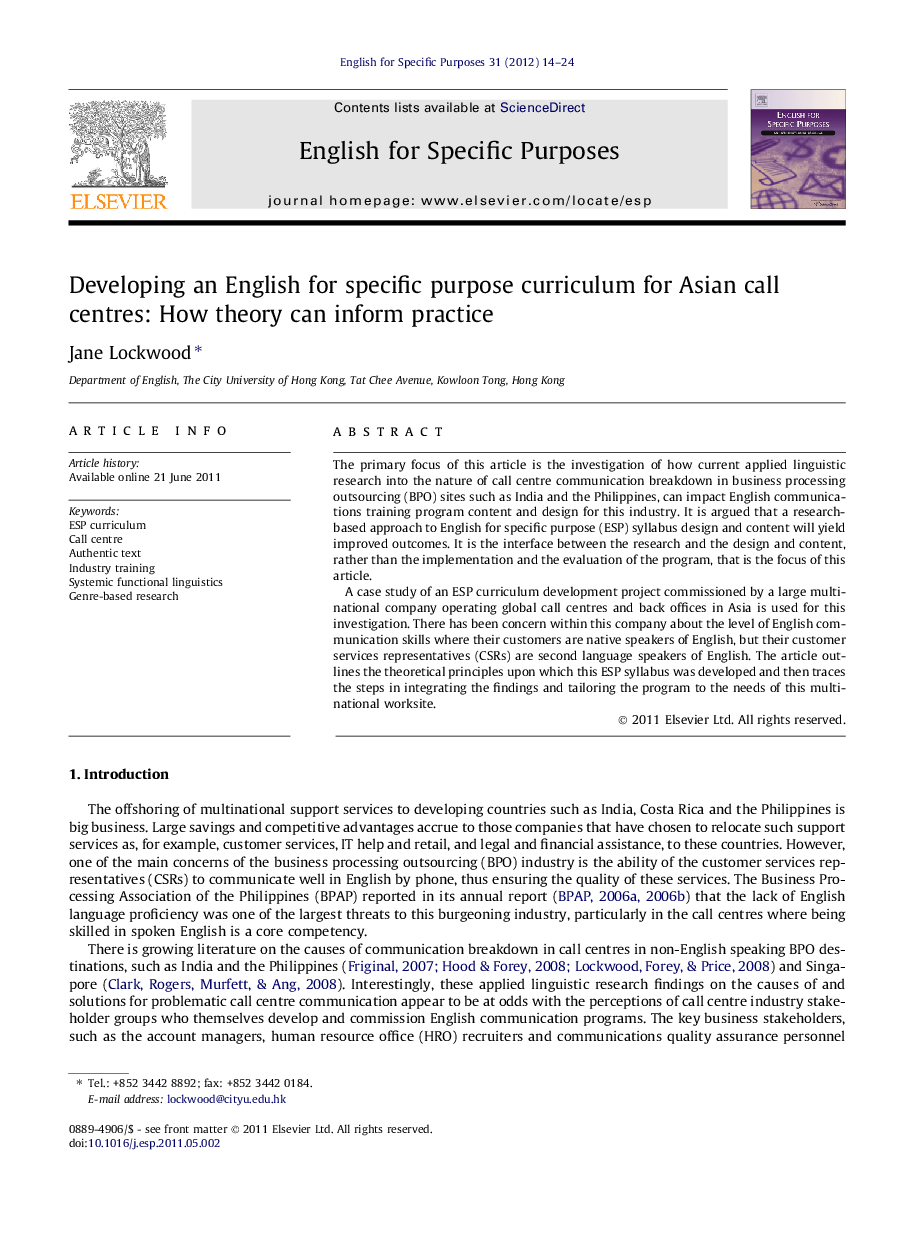| کد مقاله | کد نشریه | سال انتشار | مقاله انگلیسی | نسخه تمام متن |
|---|---|---|---|---|
| 355394 | 619273 | 2012 | 11 صفحه PDF | دانلود رایگان |

The primary focus of this article is the investigation of how current applied linguistic research into the nature of call centre communication breakdown in business processing outsourcing (BPO) sites such as India and the Philippines, can impact English communications training program content and design for this industry. It is argued that a research-based approach to English for specific purpose (ESP) syllabus design and content will yield improved outcomes. It is the interface between the research and the design and content, rather than the implementation and the evaluation of the program, that is the focus of this article.A case study of an ESP curriculum development project commissioned by a large multinational company operating global call centres and back offices in Asia is used for this investigation. There has been concern within this company about the level of English communication skills where their customers are native speakers of English, but their customer services representatives (CSRs) are second language speakers of English. The article outlines the theoretical principles upon which this ESP syllabus was developed and then traces the steps in integrating the findings and tailoring the program to the needs of this multinational worksite.
► Value of contextual information in ESP curriculum design.
► Transitioning research findings in SFL into ESP course material.
► Using authentic data in ESP curriculum design.
Journal: English for Specific Purposes - Volume 31, Issue 1, January 2012, Pages 14–24